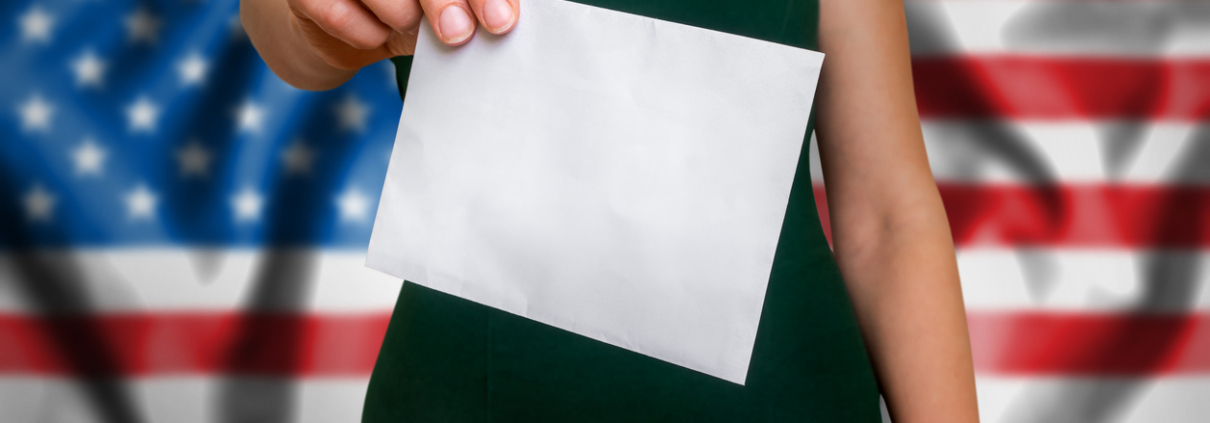The Real Reason We’re More Likely to Elect a Woman in 2020
Studies tell us there’s a huge difference between having just one versus multiple women competing for a job.
By Cyrus Mehri
Originally published in Politico
Cyrus Mehri, Esq., has developed innovative and effective diversity and inclusion tools across various industries — stemming from groundbreaking employment cases that benefit employers and workers. He has worked with major companies and leading organizations to develop board diversity and accountability strategies. Cyrus is the originator of the “Rooney Rule” diverse candidate slate requirements that have become best practices.
The contest for the presidency is like an elaborate job interview process with the American people. For decades, the interviewees have mostly been white men. This time, we’ll choose from the most diverse candidate pool in history.
With nearly two decades of experience helping organizations from Coca-Cola to the National Football League put together diverse candidate pools for their hiring processes, I can say this with confidence: In the 2020 Democratic primary, the playing field is substantially more level for diverse candidates than it has ever been—and that means we are more likely than ever to elect a woman or person of color as president.
You might ask: Isn’t this just because there are more women and people of color running than ever before?
It’s not that simple. My experience as a civil rights attorney addressing systemic employment discrimination shows there is a world of difference between processes in which only one diverse candidate is interviewed (the 2016 presidential elections, for example) and processes in which two or more diverse candidates are interviewed (the 2020 Democratic primary). A single diverse candidate faces an enormous headwind—and a tiny chance of being picked for the job in the end. In contrast, when interviewers take the time to interview multiple diverse candidates in a fair and competitive process, the dynamic shifts norms and expectations, and creates a situation in which a diverse candidate is much more likely to end up winning the position.
A 2016 study by Stefanie K. Johnson, David R. Hekman and Elsa T. Chan published in the Harvard Business Review revealed just that. Their research showed there is statistically zero chance of a woman being hired if she is the only woman in the finalist pool. But those odds go up dramatically when she is joined by a second female finalist. The same effect was seen when examining pools with more than one person of color. The difference was staggering: Companies were 79 times more likely to hire a woman and 194 times more likely to hire a person of color when the finalist pool included more than one woman or minority. This held true regardless of the number of finalists. (The researchers looked at pools ranging from three to 11 candidates, with an average size of four).
What’s going on? Companies are known to prefer the status quo, which in most cases is hiring white males. So, if only one diverse candidate ends up in an interview pool, companies will favor hiring a white man. But, as the authors of the study found, when multiple diverse candidates enter the field, the status quo actually changes, and company decisions do, too. The playing field starts to level out.
I saw the importance of a diverse interview pool in practice nearly two decades ago when I helped the NFL develop its Rooney Rule, which requires NFL clubs to interview at least one candidate of color for head coach and general manager openings. (I had first used the “diverse slate” concept in a lawsuit settlement against Coca-Cola for racial discrimination—at the time, we referred to it as a proposal for the company to engage in “fair competition.”) Fifteen years after the Rooney Rule’s 2002 enactment, 22 minority candidates were selected for head coach, compared with only four in the prior 15 years. Since 2007, 10 NFL Super Bowl teams have had a minority head coach or general manager, underscoring the nexus between diversity and success, and the credibility of a fair and inclusive process.
As proud as I am of those results, over the years, we noticed a potential flaw in the process: The only time a person of color got the job was either when that was the only person truly considered, or when the hiring team cast a wide net, ensuring there were multiple people of color in the finalist pool. That’s why, in 2017, we updated the Rooney Rule to include an expectation (not a formal rule) that decision-makers on NFL teams would interview more than one person of color.
Today, I’m working with another major company to adopt their version of the Rooney Rule. Under the company’s pilot program, when there was only one woman in the candidate pool, she was never selected, but when two or more women were in the candidate pool, women were frequently chosen. The “aha” moment of this pilot program finding has led this major company to interview at least two women and one person of color for competitive management openings.
Of course, presidential election “interview” processes aren’t exactly equivalent to corporate hiring. Business applicants for a job typically come to the table with similar qualifications, and get the same amount of face time with those doing the hiring. In a pool of electoral candidates, qualifications and experience vary widely. And we can’t, and don’t, expect all candidates to be given equal speaking time or media coverage. But elections, like corporations, are also plagued by the status quo, and single diverse candidates can face a daunting uphill battle. Multiple diverse candidates in politics can help break barriers in the same way they can in business.
In other words, it’s too much to ask one woman to break the glass ceiling. But collectively, the half dozen women running for the nation’s highest office can do it.
A poll by the ESPN’s Undefeated shows that approximately 70 percent of NFL fans—a good proxy for Americans in general, as these fans represent a remarkably broad cross section of America—“somewhat” or “strongly” support the Rooney Rule. There are good reasons for Americans to support a diverse 2020 field, too. For one, a fair fight increases the chances that the best and most impactful candidate will be selected in the end.
Research has also long shown that increasing diversity in company leadership leads to increased innovation and better returns for shareholders. This year, a candidate pool that is diverse in terms of race, gender and sexuality, as well as life and work experience and geography has already put forward a wide array of innovative policy proposals and new ideas. That’s no accident. The data from the past 20 years indicates that the process used in the 2020 primaries will result in a diverse national ticket and Democrats will have the opportunity to catapult the country forward in countless ways.



